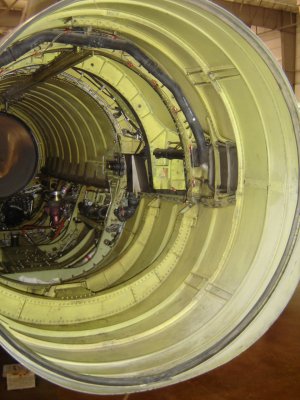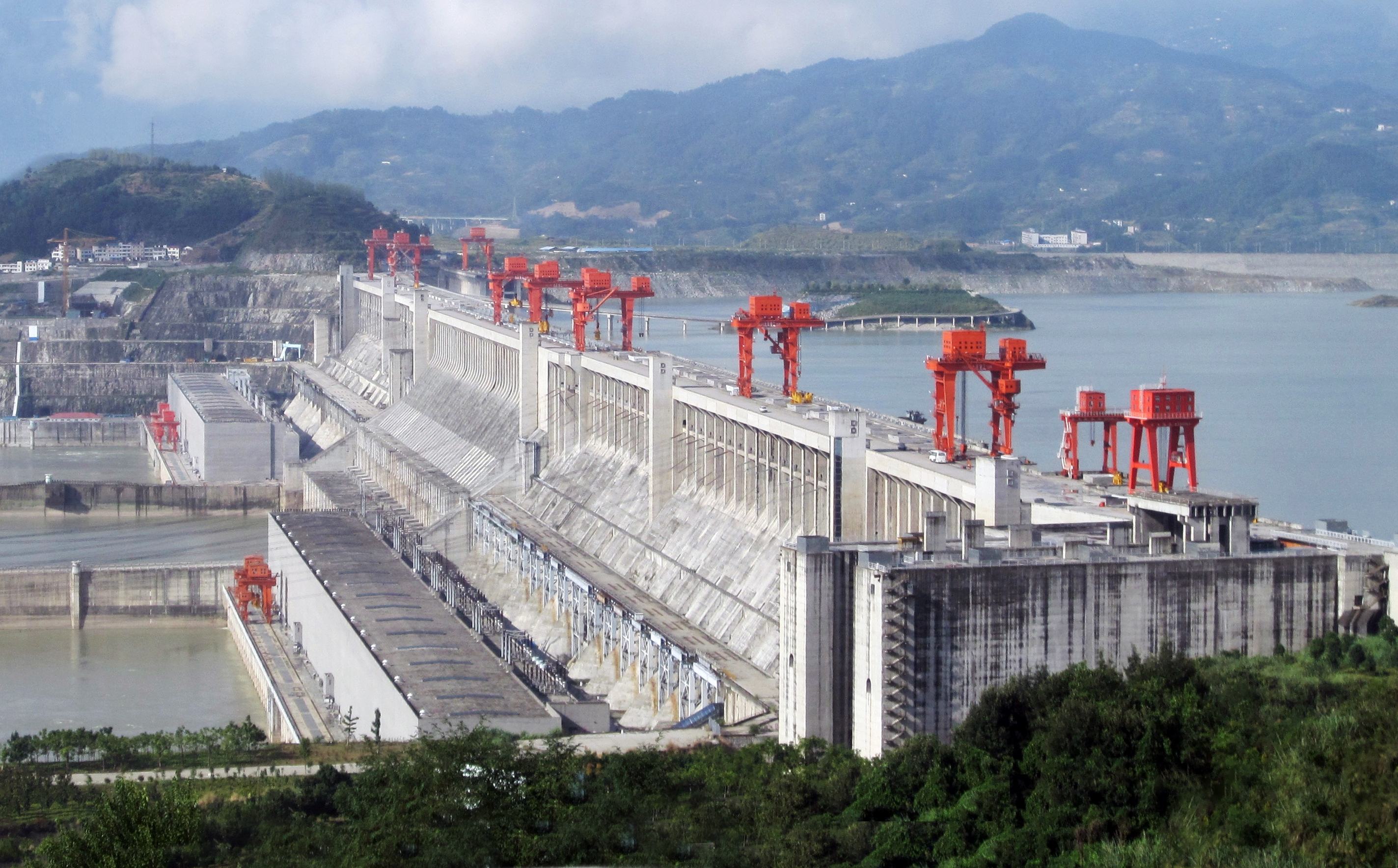|
Theodore Roosevelt Dam
Theodore Roosevelt Dam is a dam on the Salt River located northeast of Phoenix, Arizona. The dam is high and forms Theodore Roosevelt Lake as it impounds the Salt River. Originally built between 1905 and 1911, the dam was renovated and expanded in 1989–1996. The dam is named after President Theodore Roosevelt. Serving mainly for irrigation, water supply, and flood control, the dam also has a hydroelectric generating capacity of 36 megawatts. History In 1888, Billy Breakenridge became surveyor for Maricopa County. He surveyed the Salt River for potential dam sites and in July 1889, he traveled with James McClintock, William J. Murphy, and John R. Norton to choose the best location. After a week on horseback, they reached Box Canyon, near the confluence of Tonto Creek and the Salt River. They recommended the location as the best site for a dam. One of the original five federal projects authorized on March 14, 1903, under the Newlands Reclamation Act of 1902, Roosevelt D ... [...More Info...] [...Related Items...] OR: [Wikipedia] [Google] [Baidu] |
Gila County, Arizona
Gila County ( ) is in the central part of the U.S. state of Arizona. As of the 2020 census, the population was 53,272. The county seat is Globe. Gila County comprises the Payson, Arizona Micropolitan Statistical Area. Gila County contains parts of Fort Apache Indian Reservation and San Carlos Indian Reservation. History The county was formed from parts of Maricopa and Pinal counties on February 8, 1881. The boundary was then extended eastward to the San Carlos River by public petition in 1889. The original county seat was in the mining community of Globe City, now Globe. Popular theory holds that the word "Gila" was derived from a Spanish contraction of Hah-quah-sa-eel, a Yuma word meaning "running water which is salty". In the 1880s, a long range war broke out in Gila County that became the most costly feud in American history, resulting in an almost complete annihilation of the families involved. The '' Pleasant Valley War'' (also sometimes called the ''Tonto Ba ... [...More Info...] [...Related Items...] OR: [Wikipedia] [Google] [Baidu] |
Lake Hemet Dam
Lake Hemet Dam, located in Mountain Center, California, impounds the South Fork of the San Jacinto River and creates Lake Hemet. The dam and lake are surrounded by the San Bernardino National Forest. The dam is operated by the Lake Hemet Municipal Water District, which supplies water to parts of the cities of Hemet and San Jacinto as well as the Garner Valley community of Mountain Center. History Construction of the Lake Hemet Dam began on January 6, 1891, by the Lake Hemet Water Company. Construction was completed in 1895. When built, the Lake Hemet Dam was the largest solid masonry dam in the world at a height of 122.5 feet (37.3 m) until it was surpassed in height by the Roosevelt Dam in 1911. In 1923, the height of the dam was increased to 135 feet (41 m). The Lake Hemet Municipal Water District was founded on September 27, 1955, to take over the activities of the Lake Hemet Water Company, purchasing the Lake Hemet water system with funds raised through a bond initi ... [...More Info...] [...Related Items...] OR: [Wikipedia] [Google] [Baidu] |
Buildings And Structures In Maricopa County, Arizona
A building, or edifice, is an enclosed structure with a roof and walls standing more or less permanently in one place, such as a house or factory (although there's also portable buildings). Buildings come in a variety of sizes, shapes, and functions, and have been adapted throughout history for a wide number of factors, from building materials available, to weather conditions, land prices, ground conditions, specific uses, prestige, and aesthetic reasons. To better understand the term ''building'' compare the list of nonbuilding structures. Buildings serve several societal needs – primarily as shelter from weather, security, living space, privacy, to store belongings, and to comfortably live and work. A building as a shelter represents a physical division of the human habitat (a place of comfort and safety) and the ''outside'' (a place that at times may be harsh and harmful). Ever since the first cave paintings, buildings have also become objects or canvasses of much artist ... [...More Info...] [...Related Items...] OR: [Wikipedia] [Google] [Baidu] |
Buildings And Structures In Gila County, Arizona
A building, or edifice, is an enclosed structure with a roof and walls standing more or less permanently in one place, such as a house or factory (although there's also portable buildings). Buildings come in a variety of sizes, shapes, and functions, and have been adapted throughout history for a wide number of factors, from building materials available, to weather conditions, land prices, ground conditions, specific uses, prestige, and aesthetic reasons. To better understand the term ''building'' compare the list of nonbuilding structures. Buildings serve several societal needs – primarily as shelter from weather, security, living space, privacy, to store belongings, and to comfortably live and work. A building as a shelter represents a physical division of the human habitat (a place of comfort and safety) and the ''outside'' (a place that at times may be harsh and harmful). Ever since the first cave paintings, buildings have also become objects or canvasses of much artisti ... [...More Info...] [...Related Items...] OR: [Wikipedia] [Google] [Baidu] |
Former National Historic Landmarks Of The United States
A former is an object, such as a template, gauge or cutting die, which is used to form something such as a boat's hull. Typically, a former gives shape to a structure that may have complex curvature. A former may become an integral part of the finished structure, as in an aircraft fuselage, or it may be removable, being using in the construction process and then discarded or re-used. Aircraft formers Formers are used in the construction of aircraft fuselage, of which a typical fuselage has a series from the nose to the empennage, typically perpendicular to the longitudinal axis of the aircraft. The primary purpose of formers is to establish the shape of the fuselage and reduce the column length of stringers to prevent instability. Formers are typically attached to longerons, which support the skin of the aircraft. The "former-and-longeron" technique (also called stations and stringers) was adopted from boat construction, and was typical of light aircraft built until the ... [...More Info...] [...Related Items...] OR: [Wikipedia] [Google] [Baidu] |
Hydroelectric Power Plants In Arizona
Hydroelectricity, or hydroelectric power, is electricity generated from hydropower (water power). Hydropower supplies one sixth of the world's electricity, almost 4500 TWh in 2020, which is more than all other renewable sources combined and also more than nuclear power. Hydropower can provide large amounts of low-carbon electricity on demand, making it a key element for creating secure and clean electricity supply systems. A hydroelectric power station that has a dam and reservoir is a flexible source, since the amount of electricity produced can be increased or decreased in seconds or minutes in response to varying electricity demand. Once a hydroelectric complex is constructed, it produces no direct waste, and almost always emits considerably less greenhouse gas than fossil fuel-powered energy plants. [...More Info...] [...Related Items...] OR: [Wikipedia] [Google] [Baidu] |
Dams In Arizona
A dam is a barrier that stops or restricts the flow of surface water or underground streams. Reservoirs created by dams not only suppress floods but also provide water for activities such as irrigation, human consumption, industrial use, aquaculture, and navigability. Hydropower is often used in conjunction with dams to generate electricity. A dam can also be used to collect or store water which can be evenly distributed between locations. Dams generally serve the primary purpose of retaining water, while other structures such as floodgates or levees (also known as dikes) are used to manage or prevent water flow into specific land regions. The earliest known dam is the Jawa Dam in Jordan, dating to 3,000 BC. The word ''dam'' can be traced back to Middle English, and before that, from Middle Dutch, as seen in the names of many old cities, such as Amsterdam and Rotterdam. History Ancient dams Early dam building took place in Mesopotamia and the Middle East. Dams were used ... [...More Info...] [...Related Items...] OR: [Wikipedia] [Google] [Baidu] |





